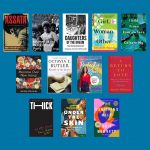 February was always one of my favorite months growing up. Being the shortest month of the school year definitely helped, but serving as the host of some of the best holidays of the year mainly sealed the deal for me. I recall the joy of exchanging candy and cards for Valentine’s Day and the pride I felt learning about my history while celebrating Black History Month. The month of February provided me with an opportunity to showcase my knowledge of African-American trailblazers and learn more about ones I was unfamiliar with. My love for Black History Month grew because it gave me a chance to learn about people that actually looked like me. It wasn’t until about the fourth grade that I realized that almost all of the black people I learned about during my black history lessons were men.
February was always one of my favorite months growing up. Being the shortest month of the school year definitely helped, but serving as the host of some of the best holidays of the year mainly sealed the deal for me. I recall the joy of exchanging candy and cards for Valentine’s Day and the pride I felt learning about my history while celebrating Black History Month. The month of February provided me with an opportunity to showcase my knowledge of African-American trailblazers and learn more about ones I was unfamiliar with. My love for Black History Month grew because it gave me a chance to learn about people that actually looked like me. It wasn’t until about the fourth grade that I realized that almost all of the black people I learned about during my black history lessons were men.
Conflicted by my new discovery I asked my mother, “Why do we learn about the same people during Black History Month every year?” My mother, a teacher by profession, simply replied, “Well whose fault is that?” She took that moment to share with me that it was my responsibility to find what was missing in my history books. So that evening in our local public library, we embarked on a journey navigating through the halls of African-American history that featured countless influential African-Americans who aren’t celebrated on a consistent basis. This journey through black history challenged me to learn more about notable young and female African-Americans who impacted our rich history. After reading about how Ida B. Wells-Barnett refused to give up her seat on a train and consequently sued the Chesapeake & Ohio Railroad Company, I was hooked. As an Ohio native, I had previous knowledge of the railroad company and was fascinated that a black woman in the 1800s was courageous enough to sue for discrimination. Although Wells-Barnett initially won her case in local circuit courts, the railroad company appealed and the Tennessee Supreme Court reversed the ruling. Rather than being discouraged, she used that experience as a catalyst to begin a career in journalism. As soon as I read about her, I found my new role model.
Luckily, I had great women in my life and a newly found hero, but too many girls today aren’t as fortunate. Young women shouldn’t have to wait until Black History Month to learn about a woman that they can aspire to be one day. It is imperative that women of color invest in young girls through volunteering and mentoring to ensure the success of our younger generation. Use this Black History Month to begin or continue “paying it forward.” Our girls are counting on you.


